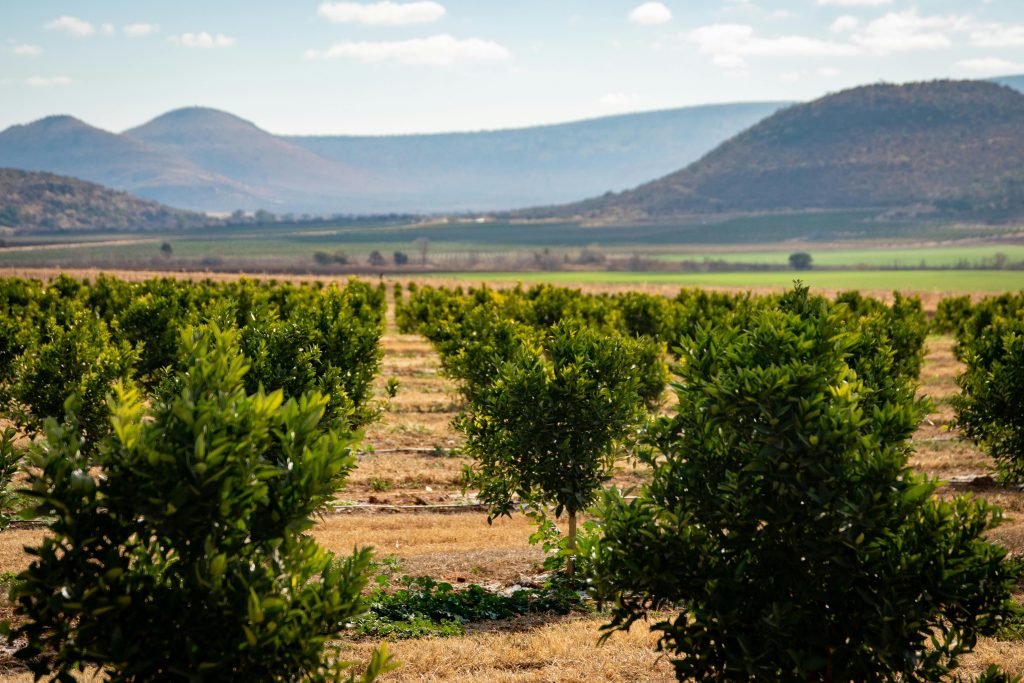Gypsum in Fall Soil Prep: Building a Strong Foundation for Spring Vegetables
Every successful vegetable garden begins with healthy soil. Fertile soil is not only about nutrients but also about structure, drainage, and the ability to support

Orchards are judged not only by the quantity of fruit they produce but by the quality of that fruit. Bright color, sweet flavor, firmness, and storage life all determine whether apples, pears, peaches, or citrus are marketable and profitable. As orchard managers know, fine-tuning nutrient programs makes the difference between ordinary and exceptional harvests. Among the nutrients that influence fruit quality, magnesium sulfate stands out as one of the most important in the weeks leading up to harvest.
Magnesium sulfate, often known as Epsom salt, delivers two essential nutrients: magnesium and sulfur. Magnesium is the central atom of chlorophyll, directly tied to photosynthesis and energy production. Sulfur supports protein and enzyme activity, helping plants use nitrogen more efficiently. Together, they influence not only tree health but also the quality traits consumers demand in fruit.
Applying magnesium sulfate pre-harvest ensures trees maintain strong photosynthesis, fill fruit with sugars, and develop vibrant color and flavor. At Supply Solutions LLC, high-quality magnesium sulfate is available for orchardists seeking to maximize fruit quality and customer satisfaction.
Magnesium is often called the forgotten nutrient because it is not applied as frequently as nitrogen, phosphorus, or potassium. Yet its role in fruit production is critical.
When magnesium is deficient, leaves may turn yellow between veins, photosynthesis slows, and fruit size and sweetness decline.
Sulfur, the second nutrient in magnesium sulfate, has also become more important as atmospheric sulfur deposits have decreased. For fruit trees, sulfur is vital for:
Together, magnesium and sulfur provide orchardists with a complete nutrient package that enhances fruit quality.
Applying magnesium sulfate in the weeks before harvest directly benefits fruit quality.
For orchardists, these improvements translate into better marketability and higher returns.
The timing of magnesium sulfate application is crucial.
By including magnesium sulfate in fall orchard programs, growers support both current and future crops.
For commercial growers, magnesium sulfate offers direct, measurable benefits.
Adding magnesium sulfate is a simple way for orchard managers to protect profits during harvest season.
Some landscapers manage small orchards or fruiting trees on estates, campuses, or commercial properties. Magnesium sulfate helps these landscapes look and perform their best.
For landscapers, magnesium sulfate is a tool that improves both aesthetics and performance.
Even small-scale orchardists and home gardeners can benefit from magnesium sulfate applications.
For backyard growers, magnesium sulfate is an easy and affordable way to improve harvest quality.
Magnesium sulfate can be applied in several ways, depending on orchard size and equipment.
Avoiding these mistakes ensures magnesium sulfate is used effectively and profitably.
At Supply Solutions LLC, high-quality magnesium sulfate is chosen for solubility and performance. Orchardists can trust it to dissolve easily, deliver nutrients efficiently, and provide visible results in fruit quality.
By sourcing reliable fertilizers and offering expertise, Supply Solutions LLC helps growers make the right decisions at the right time. Whether managing a commercial orchard, a small family planting, or backyard fruit trees, the right magnesium sulfate makes a noticeable difference.
Every harvest is a celebration of the grower’s hard work and the soil’s fertility. By paying attention to magnesium and sulfur, orchardists can elevate fruit quality to a higher level. Magnesium sulfate is an affordable, easy-to-use amendment that improves color, sweetness, firmness, and storage life. Applied pre-harvest, it turns good fruit into exceptional fruit that satisfies customers and boosts profits.
For magnesium sulfate and other trusted orchard fertilizers, visit Supply Solutions LLC. Reach us through our contact form, message us on Facebook, call 503-451-1622, or email sales@mysolutionssupply.com to get the products and guidance you need for healthier orchards and better harvests.
Every successful vegetable garden begins with healthy soil. Fertile soil is not only about nutrients but also about structure, drainage, and the ability to support

As October arrives, vegetable gardens across the country face a turning point. The days are shorter, the nights are cooler, and frost is never far
Give us a call or visit our store, and we’ll help you find the right solution for your business.
© Supply Solutions LLC 2025